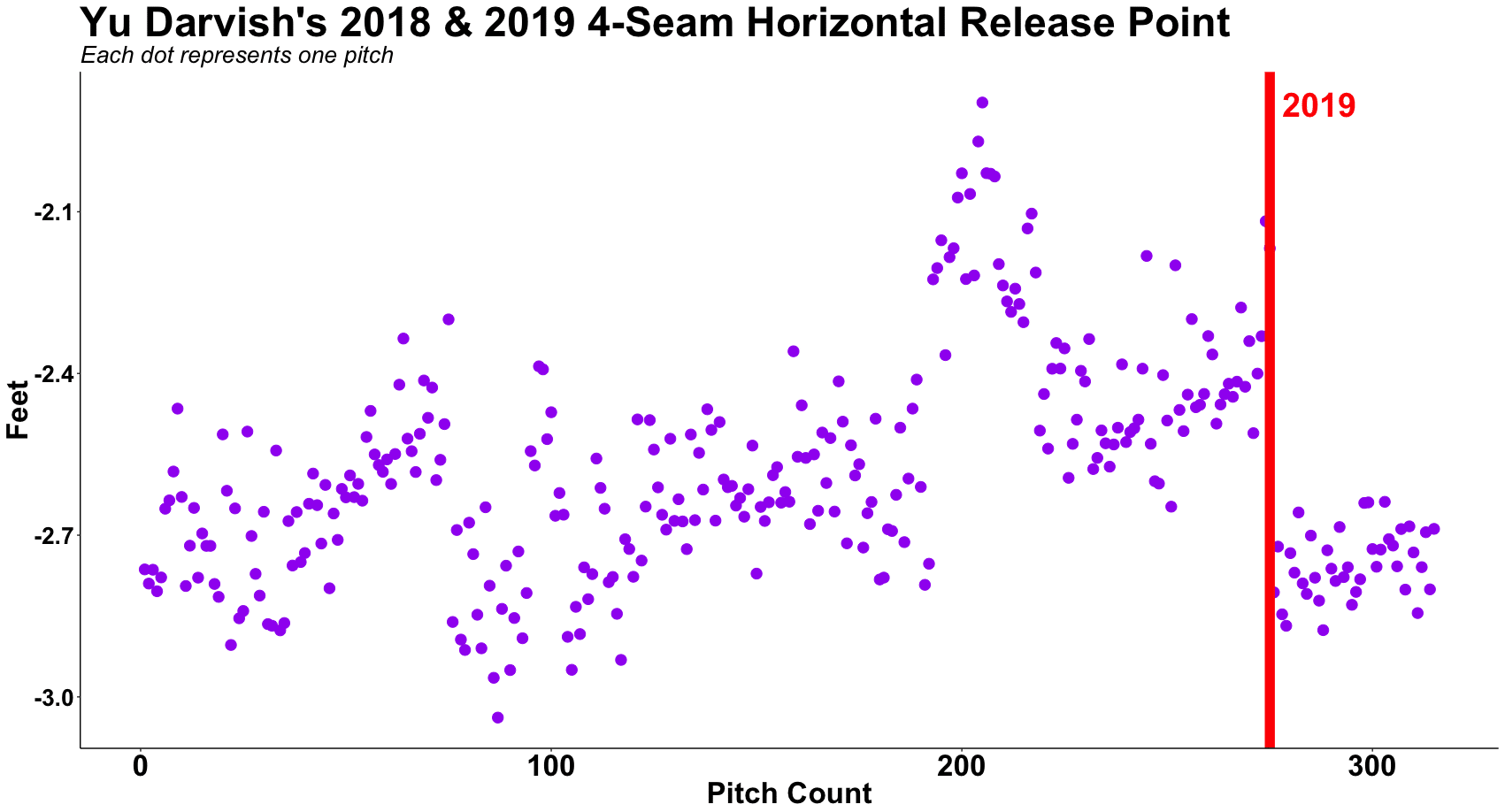
Despite Poor Command, Data from Yu Darvish’s First Start Suggests He’s Fine
I’d be lying to you if I said Yu Darvish‘s first start didn’t concern me. After striking out the first two batters of the game and displaying velocity between 93-95 mph, Darvish proceeded to walk seven batters and displayed lower velocity before being relieved by Steve Cishek in the 3rd inning.
Many others were equally concerned about obvious issues with Darvish’s velo and command, understandably so, but the Trackman data suggests that we can all take a deep breath. In spite of what the box score says, screams really, everything appears normal.
Indeed, Darvish’s average four-seam velocity in his first start was down about 2 mph from his usual. I would note, though, that some of his cutters appear to have been incorrectly classified by Trackman as four-seamers. That would explain why his overall speed was down. So while you can see that decrease in the figure below, Darvish was pumping 94 mph just before Joe Maddon removed him Saturday night.

Now, I was dying to see what Darvish’s release point data looked like because this would tell us if he was experiencing excessive fatigue and/or discomfort. Fortunately, that data looks exceptionally clean.
The first figure below is his horizontal release point (purple dots) and the second is his vertical release point (blue dots), both of which are plotted with 2018 data left of the red line.
The purple dots show that Darvish’s release point was well within normal range. Also, look at the higher peak in 2018, which coincided with Darvish’s injury. We don’t see the same trajectory of release points in 2019, thankfully.

Darvish’s vertical release point looks encouraging as well. Similar to the previous graph, his release point was lower just before his injury surfaced last season. But he was releasing the ball slightly higher in Saturday’s start, which suggests no discomfort.

Overall, I feel much better about Darvish after looking closely at this data. There are no abnormalities that jump off the page, so it seems he just didn’t have command of his fastball for whatever reason. As such, it’s more likely that his velocity dip was a byproduct of that poor command.
In other words, Darvish was probably throwing a little slower because he was trying a little too hard to locate. Or at least that’s how I’m interpreting the data. Regardless, I think there’s zero cause for concern. Other than the seven walks, of course.

